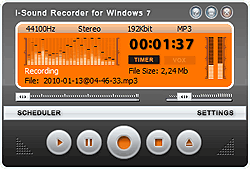What Is a Sound Card?
A sound card (also known as an audio card) is the device used to control the input and output of audio files on a computer. For the most part, the sound card is used by the computer user to hear the sound on music and video files and from video games. In the past, beeps were the only sound that could be produced by computers. Because of the invention of the sound card, more complex audio can be accessed and processed by a computer. Sound cards now come installed in all of the computers on the market. They have become common and important; they are now required by many mainstream computer systems and programs.
How Does your Sound Card Work?
Sound cards have a standard operation for controlling sound on computers - of processing the input and output of sound. The input comes from other devices such as microphones or MIDI musical instruments. The sound card takes the sound from the device, records it and then processes it. For output, the device takes instructions from the program and plays the sound through speakers connected to the computer.
Sound cards use the other elements that are installed inside of it to handle the tasks that are assigned to it. The digital signal processor (DSP) is a chip in the sound card that receives and handles the incoming sound signals. It then manipulates the signals to access the sound. The digital-to-analog converter (DAC) controls the outgoing sound. It takes the sound frequencies from the program and converts it into frequencies that are audible to the human ear. The analog-to-digital converter (ADC) does the same job as the DAC but in reverse. It changes the audio for the sound card to be able to process it. Digital audio is for human ears and analog audio is what the computer understands.
What the difference between onboard and add-on sound cards?
The general idea is that add-on sound cards produce better sound.The first question that comes to mind is what does "better" mean? Better is a relative term but for the sake of professional and commercial recording, sound cards that have a signal to noise ratio higher than 110 dB are considered to be high quality. Hardware sound effects and popular "Stereo Mix" feature is another major component of sound equipment.
Other Components of Sound Card
The Musical Instrument Digital Interface (MIDI) takes the signals from connected musical instruments and processes it. Many musicians and songwriters are now using the same type of technology to write and record songs. Keyboards and guitars are connected to computer systems and sound is recorded with sound cards and special software programs.
The sound card has its own memory source. Like many of the devices used today, sound cards take advantage of the power of flash memory, or Random Access Memory (RAM). The memory is temporary and is only stored until the sound card has a chance to process the incoming and outgoing data. Once the stored data is not longer needed by the sound card, it is removed from the memory.
The sound card has evolved over the years since its creation. When first conceived, FM Synthesis was the method used by sound cards to create and interpret sound. This means that the sound card actually imitated the sound that closely resembled the audio file that it was accessing. Now a more realistic approach, called Wavetable Synthesis, is being used. This is when the sound card takes a piece of the real sound and copies it to create the full version of it. Sound cards are now able to produce a more realistic sound than earlier versions.


